I’ve always been curious about whether a double air layer could be used to produce three trees at once. Knowing that cryptomeria bonsai layer well, I thought I’d give it a try.
Double decker air layer started May, 2017
One challenge I had was that there was little foliage between the two layers. It’s better to have more foliage as the more growth, the more successful the root production.
Small gap between layers
I could see roots inside the plastic on the top layer so I figured it would be safe to remove it. Here’s what it looked like inside last week.
Roots growing in white sphagnum moss
It turns out most of these roots emerged from just one side of the trunk.
Few roots on the other side
There was good callus all the way around so I reopened the callus where there were no roots and reapplied rooting hormone to help stimulate new roots in this area.
What about the lower layer? Here’s what I found inside.
Good callus, few roots
Clearly, it was not yet time to remove the lower layer. I cut away the bottom half of the callus, reapplied root hormone and filled the bag up with a mix of moss and bonsai soil.
All closed up
Were there more foliage between the layers, I’d guess there would be more roots. Will check the bag again in a few months to see how the new roots are developing.
The remaining layer
As for the section I removed, I pruned it a bit to remove an extraordinary number of pollen cones.
Cryptomeria pollen cones
I then planted the layer in a standard mix of bonsai soil (akadama, lava, and pumice).
Because young roots are weak, I used the tie-down wires to secure the tree directly rather than using the wire to secure the roots.
In the new pot
The side with no roots
Here’s the separated layer in its new pot.
Cryptomeria from air layer – January, 2018
It’s essentially a large rooted cutting at this point so I’ll be watching the water carefully for a while.
What about the split trunk about two inches above the soil line? Looks like a good opportunity to create a twin-trunk specimen. The now obvious second trunk was a small shoot last year or I would have started the layer higher up. I’ll look to re-layer the tree in another year or two once it’s better rooted in to its new pot.
Subscribe to Bonsai Tonight
New Posts Delivered Every Tuesday and Friday
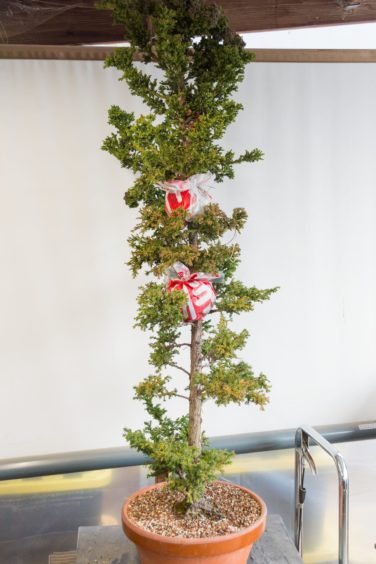
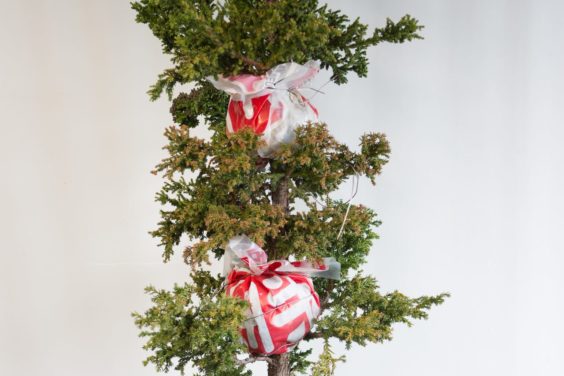
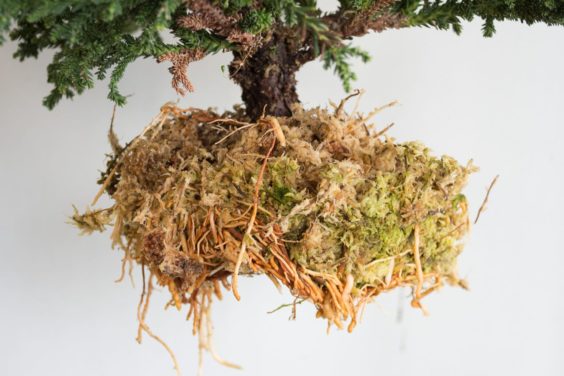
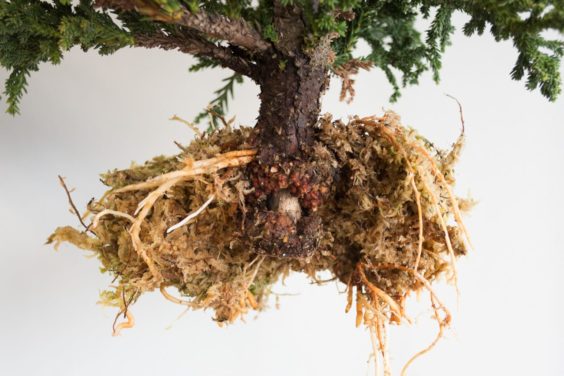
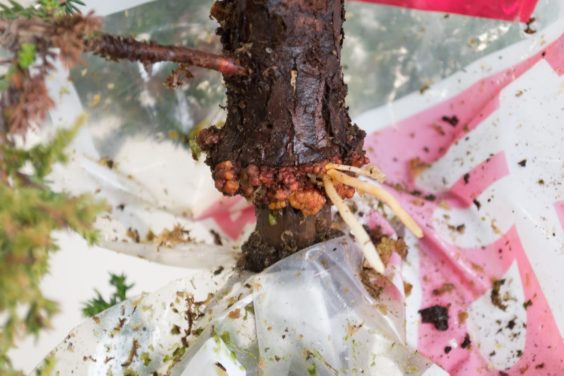
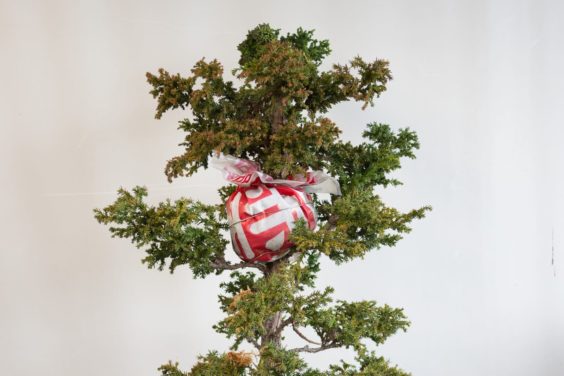
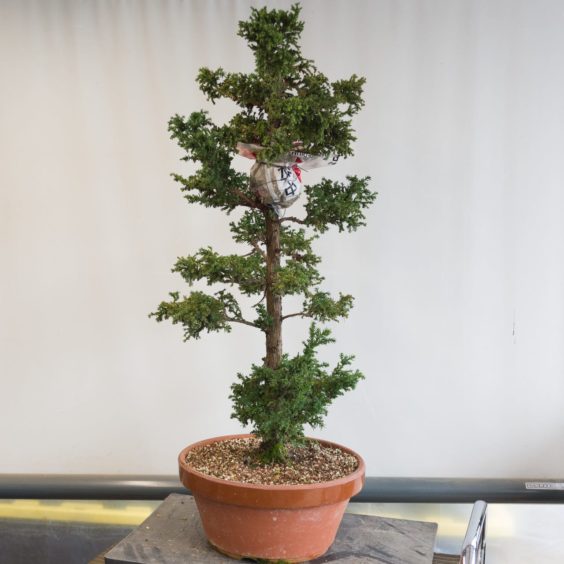
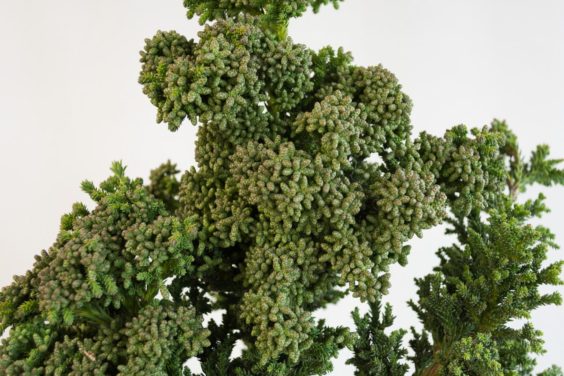
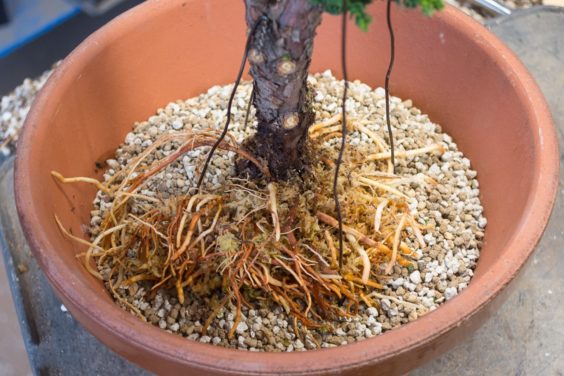
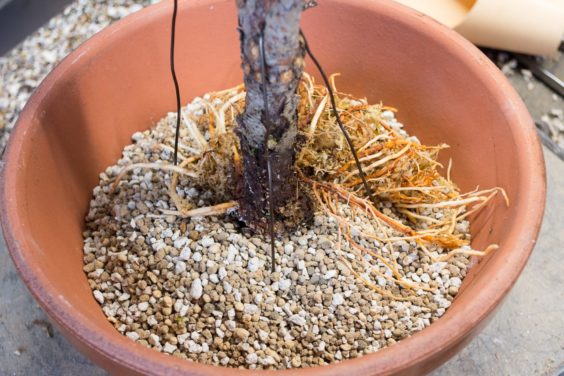
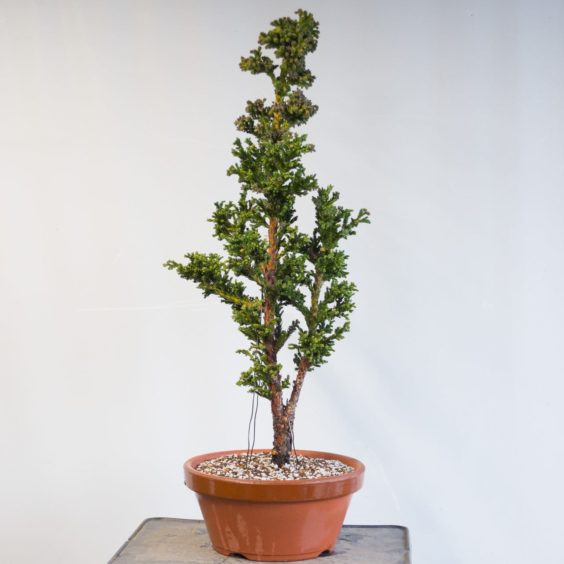
Jef Porto-Carrero says
Another good post Jonas!
Would you always recommend using a mix of moss and bonsai soil or are there exceptions?
Jonas Dupuich says
Good question – I’ve used straight moss and moss near the cut with soil on the outside but don’t know that I have a preferred approach. I’d likely just use moss for smaller layers and add some soil around that for larger layers – particularly ground layers.
carol ebreo says
How does the tie down with wires work? Are they going through the bark. Have never tried this or seen this?. are they at the bottom of the pot through the hole?
Jonas Dupuich says
Hi Carol – good question! The tie down wires are the usual tie down wires that emerge from holes in the bottom of the pot. The wires are longer than normal and simply connect over a low branch – on top of the bark rather than through it. The wire will cut in before long so I’ll be monitoring it throughout the spring.
Mert Ciftdemir says
Really an interesting post Jonas. I’m curious about something, I am wondering what was the time of year when you took the photos? My cryptomerias wear their winter colors now. They are all reddish brown.
Jonas Dupuich says
Hi Mert – the layer was removed in early January. It’s not usually cold enough for my cryptomeria to color up in winter, and this tree was somewhat sheltered which likely helped it stay green.
Bruce Williams says
What was the time between the start and the potting of the first cutting? What was the location/environment of the tree during the air layering?
And, if you don’t mind, what incantation or spell did you place on the tree to start the air layering?
Thanks
Jonas Dupuich says
Hi Bruce – it was started 5/17, removed 1/18. The tree was kept in full sun just like normal. The incantation took the form of powder root hormone (cryptomeria root pretty easily from layer).